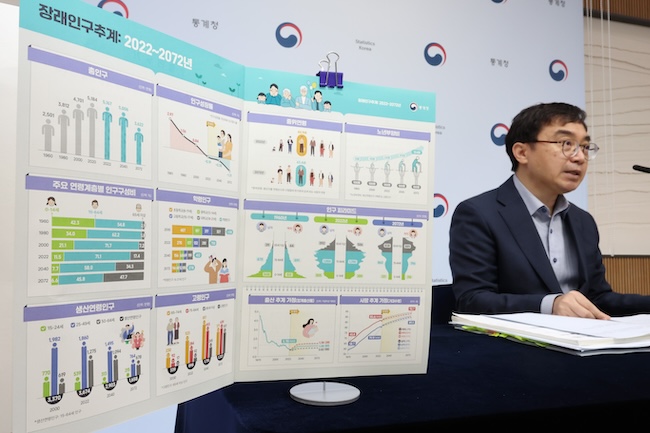
South Korea is expected to witness a significant influx of foreign nationals over the next five decades. (Image courtesy of Yonhap)
SEJONG, Dec. 18 (Korea Bizwire) – In an unprecedented demographic shift, South Korea is expected to witness a significant influx of foreign nationals over the next five decades. According to recent analysis, up to 96,000 foreigners are projected to enter the country annually.
This trend aligns with what some demographers are calling the ‘worst-case fertility scenario.’ If current patterns continue, by 2072, one in every three working-age individuals in South Korea could be a foreigner.
Statistics Korea’s ’2022 Population and Housing Census Results’ reveal that as of November 2022 year, the foreign population stood at 1.75 million. Among them, 1.56 million were of working age (15-64 years), constituting 4.3 percent of the total working population of 36.7 million.
This number marks a rapid increase from 2015 when the foreign population was 1.36 million. Over seven years, there has been a 28.5 percent surge, surpassing 1.7 million.
The Statistics Korea’s future population projection for 2022-2072 anticipates this trend to continue. The net international migration of foreigners is expected to maintain an annual average of 96,000 (based on high-end estimates).

The Statistics Korea’s future population projection for 2022-2072 anticipates this trend to continue. The net international migration of foreigners is expected to maintain an annual average of 96,000. (Image courtesy of Yonhap)
A graphic projection of the population’s age composition indicates a dramatic transformation. The working-age population, currently 71.1 percent of the total, is predicted to drop below half to 45.8 percent in 50 years.
The youth population (aged 0-14) will shrink to 6.6 percent, while the elderly (65 and older) will rise to 47.7 percent, propelling South Korea into an extreme aging society.
Narrowing down to the working-age demographic, the net international migration of foreigners is estimated at around 91,000 annually. This means that in 50 years, an additional 4.55 million foreign workers will have been added to the workforce.
Considering the nature of foreign laborers who often return to their home countries after employment in South Korea, it’s assumed there will be no natural increase in the foreign population. Therefore, by 2072, including the current foreign workforce and subsequent net migration, the foreign working-age population is projected to reach 6.11 million.
In this scenario, where pessimistic forecasts regarding birth rates and life expectancy materialize, the total working-age population could plummet to 16.67 million by 2072, with foreigners comprising 36.7 percent of this group.
Even without an established immigration office, one in three working-age individuals in South Korea could be a foreign national in 50 years.
As the foreign workforce expands, their employment is expected to diversify beyond sectors traditionally shunned by locals, like construction and shipbuilding, to encompass all areas of society. Interactions with foreigners in workplaces and communities are set to become a normal part of daily life.
However, as the foreign population grows rapidly and becomes a larger part of society, the impact of natural increases and decreases will likely become more significant. The patterns of low birth rates and aging seen in the Korean population are expected to manifest similarly among foreigners.
J. S. Shin (js_shin@koreabizwire.com)






